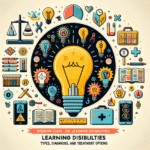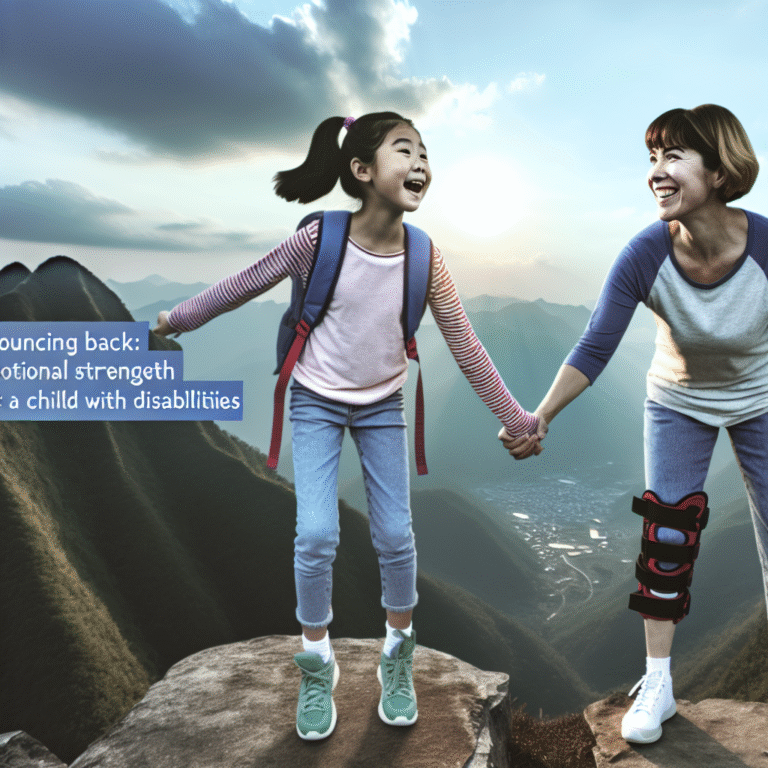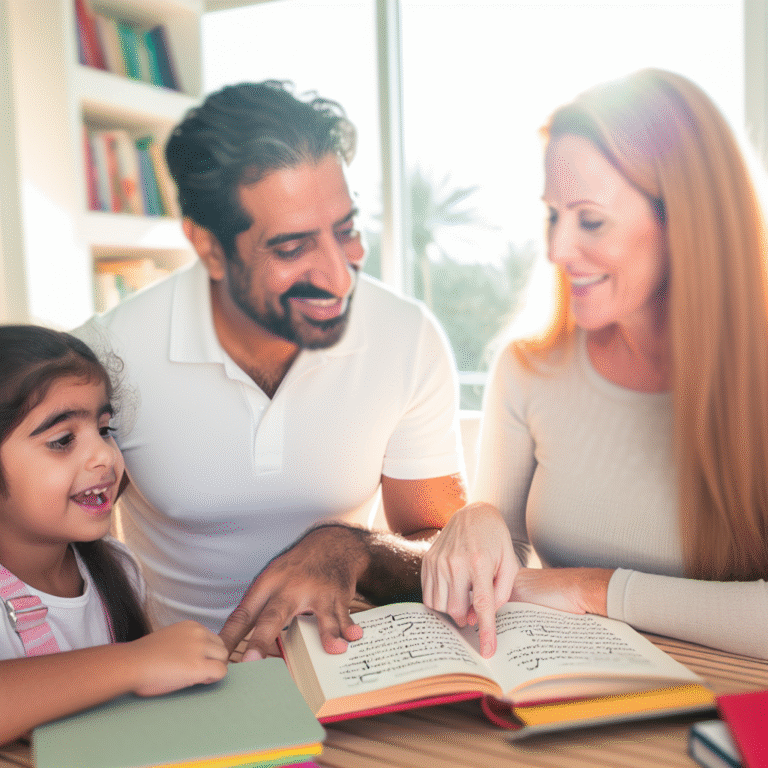
Beyond the Labels: Understanding Effective Accommodations for Learning Disabilities
Introduction
Imagine a classroom where every child thrives, where individual needs are acknowledged, and where learning differences are embraced as part of the diverse tapestry of human potential. This ideal scenario is not only a dream but an attainable reality when we move beyond the labels and focus on understanding effective accommodations for learning disabilities. These accommodations aren’t just adjustments; they are essential tools that empower students to overcome barriers and maximize their potential.
In today’s educational landscape, the narrative surrounding learning disabilities often fixates on labels rather than solutions. The term "learning disability" can evoke a range of reactions, from misunderstanding and stigma to empathy and support. However, it is crucial to recognize that each student’s experience is unique. The journey toward effective accommodations begins with listening to these individual stories, understanding their needs, and ensuring that practical strategies are in place to support them at all levels of education.
In this article, we will explore the complexities of learning disabilities, discuss the importance of tailoring accommodations to individual needs, and offer actionable strategies and insights. Together, we will uncover how educational environments can truly become inclusive spaces where every learner is celebrated and supported.
Understanding Learning Disabilities
What Are Learning Disabilities?
Learning disabilities are neurological conditions that affect how individuals process information. This can include difficulties in reading, writing, math, or executive functioning. It’s important to note that learning disabilities are not indicative of a person’s intelligence. In fact, many individuals with learning disabilities possess average or above-average intelligence.
Table 1: Common Types of Learning Disabilities
| Type of Learning Disability | Description |
|---|---|
| Dyslexia | Difficulty with reading and decoding words |
| Dysgraphia | Challenges with writing and fine motor skills |
| Dyscalculia | Issues with mathematical concepts and computations |
| ADHD | Attention-related challenges affecting focus and self-regulation |
The Impact of Labels
Labels can often be a double-edged sword. While they can provide a framework for understanding a child’s needs, they are also limited in scope and can lead to reduced expectations. The first step in beyond the labels: understanding effective accommodations for learning disabilities is to focus on the individual rather than their diagnosis.
For instance, consider a student labeled as dyslexic. While dyslexia does inform some of their challenges, emphasizing this label alone overlooks their strengths, such as creativity or problem-solving skills. Educators and parents must strive to see the whole student and leverage their abilities to implement suitable accommodations.
Effective Accommodations: What Works?
Differentiation and Personalization
Effective accommodations are not one-size-fits-all solutions. Understanding the specifics of each learning disability is crucial in creating practical strategies tailored to individual student needs. This approach is often referred to as differentiated instruction.
Case Study: Sarah’s Story
Sarah is a 10-year-old student diagnosed with dyslexia. In her classroom, traditional reading methods did not resonate with her learning style. Her teacher recognized this and decided to implement personalized accommodations. Informal assessments noted that Sarah thrived with auditory learning experiences. Consequently, her teacher integrated read-aloud sessions, audiobooks, and multimedia resources into their reading curriculum.
Analysis: By personalizing Sarah’s learning experience, her teacher provided the support she needed to engage with the material while fostering her love for reading—demonstrating that effective accommodations extend beyond just academic support.
Implementing Assistive Technology
In today’s digital age, technology offers valuable tools for supporting learners with disabilities. Assistive technology can range from simple applications to advanced software designed to aid in learning.
Table 2: Examples of Assistive Technology
| Tool | Purpose |
|---|---|
| Text-to-Speech Software | Converts written text to audio |
| Speech-to-Text Software | Allows voice input for written assignments |
| Digital Graphic Organizers | Helps organize thoughts visually |
Case Study: Mike’s Journey with Tech
Mike, a high school student with dysgraphia, struggled to complete written assignments due to significant challenges with handwriting. His school implemented speech-to-text software, allowing him to express his thoughts verbally and produce written work more comfortably. As a result, Mike’s grades and confidence improved, illustrating the transformative power of technology in education.
Analysis: Mike’s story reinforces that leveraging technology can empower students to overcome specific barriers, promoting an inclusive and equitable learning environment.
Flexible Assessment Methods
Another critical aspect of understanding effective accommodations for learning disabilities lies in assessment. Traditional testing methods may not accurately reflect a student’s knowledge or abilities. Alternatives, such as project-based assessments or oral presentations, can offer insights into a student’s competencies.
Case Study: Emily’s Assessment Innovations
Emily is a student with ADHD whose test anxiety hindered her performance on standardized assessments. To accommodate her needs, her teacher arranged for Emily to demonstrate her knowledge through a project that involved creating a presentation about her research topic instead of taking a conventional test.
Analysis: This approach not only decreased Emily’s anxiety but also showcased her understanding of the material, underlining the significance of flexible assessment methods in education.
Creating an Inclusive Classroom Environment
Building Awareness and Empathy
Creating an inclusive classroom environment starts with building awareness among educators and peers. Professional development workshops can educate staff on learning disabilities, how they manifest, and effective strategies to support affected students.
Fostering Peer Support and Collaboration
Inclusion is not solely the responsibility of the teacher; it requires fostering a supportive culture that promotes teamwork. Peer mentoring programs can create a collaborative atmosphere where students learn from each other’s strengths and experiences.
Table 3: Strategies for Fostering Collaboration
| Strategy | Description |
|---|---|
| Peer Tutoring | Assign students to support each other |
| Group Projects | Encourage teamwork in completing tasks |
| Cooperative Learning | Utilize small group dynamics to foster collaboration |
Case Study: Group Dynamics in Alex’s Class
Alex, a high school student diagnosed with ADHD, initially struggled with group projects due to difficulty staying focused. His teacher introduced structure and guidelines for group work, encouraging students to designate roles and responsibilities. Over time, Alex thrived in this environment, harnessing his creativity while relying on peer support.
Analysis: Alex’s case emphasizes the role of collaboration in education, highlighting that well-structured group dynamics can enhance learning while supporting students with diverse needs.
Real-World Applications and Considerations
Collaborating with Parents and Specialists
Collaboration among educators, parents, and specialists is vital in addressing the challenges faced by students with learning disabilities. Regular communication ensures that strategies remain effective, and parents can offer insights that may not be visible in a school setting.
Case Study: The Baker Family Approach
The Baker family proactively engaged with their son Jake’s educators to develop a comprehensive plan that combined classroom strategies and home support. The inclusion of weekly check-ins allowed them to maintain consistency and address any emerging challenges promptly.
Analysis: The Baker family’s proactive involvement illustrates the importance of collaboration and continuity in effectively accommodating diverse learning needs.
Monitoring Progress and Reassessing Accommodations
Lastly, it’s essential to continually monitor students’ progress and adjust accommodations as needed. Regular assessments and feedback allow educators to shift strategies that may become less effective over time, ensuring that students receive the support they need.
Conclusion
As we reflect on the importance of understanding effective accommodations for learning disabilities, it is clear that a shift in perspective is essential. Beyond the labels, there lies a world of individual potential waiting to be unlocked through personalized support, innovative strategies, and collaborative environments.
Educators, parents, and peers must join forces to ensure that learning disabilities are seen not as obstacles but as unique pathways for growth. When we approach each student with an open heart and mind, we foster a culture of acceptance and possibility.
Let this article be a call to action—to advocate for meaningful accommodations tailored to individual needs and to celebrate the incredible contributions of all learners. Together, we can create inclusive classrooms that ignite passion for learning and empower every student to realize their potential.
FAQs
1. What are the most common types of learning disabilities?
Common types include dyslexia, dyscalculia, dysgraphia, and ADHD. Each type presents unique challenges that require specific accommodations.
2. How can I identify if my child has a learning disability?
Signs may include difficulties in reading, writing, math, or attention-related challenges. A comprehensive evaluation by an educational psychologist can provide further insights.
3. What role does technology play in supporting students with learning disabilities?
Assistive technology can significantly aid learning, providing tools such as text-to-speech software, organizational apps, and tailored learning platforms that cater to specific needs.
4. How can teachers develop effective accommodations?
Collaborating with parents, assessing individual strengths and weaknesses, and staying informed about new strategies and technologies are crucial steps for teachers.
5. Can accommodations change over time?
Yes! Regular monitoring and open communication with students allow for timely adjustments to ensure that strategies remain effective as needs evolve.
6. What can parents do to support their child with learning disabilities at home?
Encouraging open discussions, providing a structured environment, utilizing assistive technologies, and collaborating with teachers can create a supportive atmosphere for a child’s educational journey.
By prioritizing inclusivity and understanding, we can truly move beyond the labels and champion effective accommodations for all students, leading to a richer and more fulfilling educational experience.









